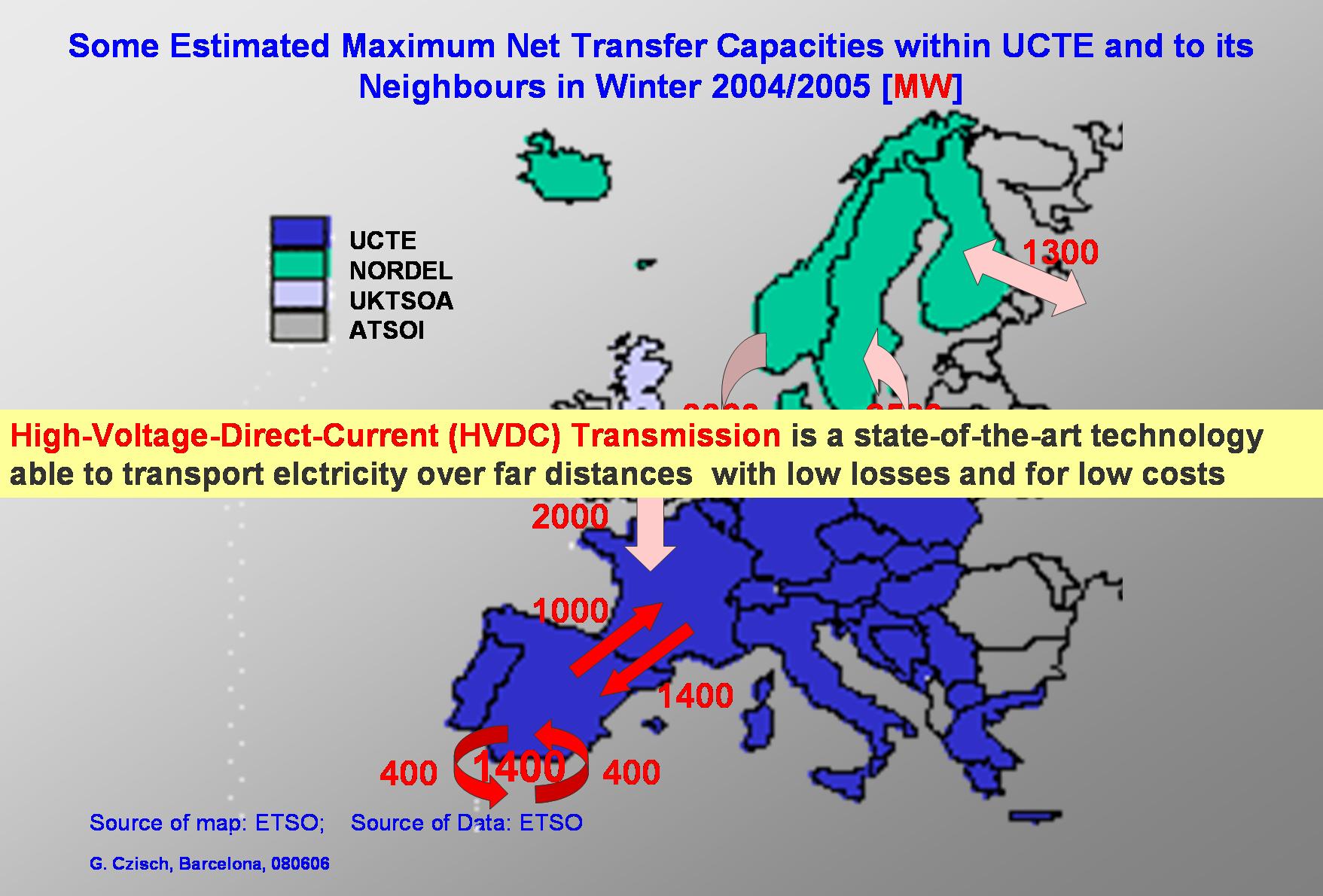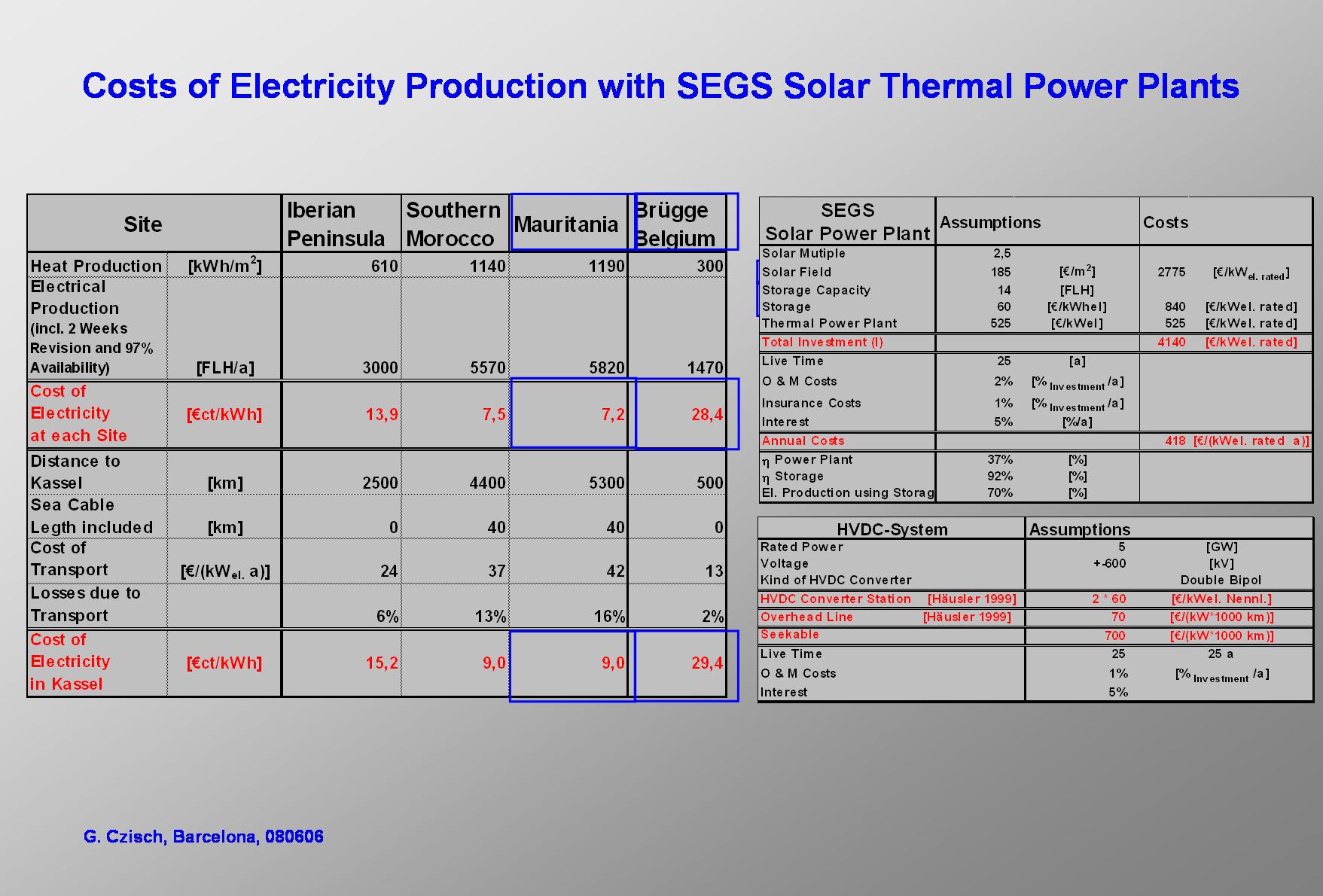Lecture Barcelona 2008 - Slide 10
Aus Transnational-Renewables
| Lecture Magdeburg [2001,en], Vortrag Lübeck [2006,de], Lecture Barcelona [2008,en], Vortrag EWEA 2000 [2000,en] |
| Vorstellung regenerativer Energien: Biomasse, Windenergie, Fallwindkraftwerke, Geothermie, Wasserkraft, Solarenergie |
| Overview | 
|
With the underlying economical assumptions based on today's technologies and prices shown in the upper right table the costs of solar thermal electricity production are calculated for some selected sites. The size of the solar thermal power plants is chosen to be 200 MWel. (The size matters because of scaling effects.) The results of the cost calculation are listed in the table at the left side. (The cost assumption for the power plants are mainly based on information of Dr. Franz Trieb of the DLR Stuttgart.). Comparing the costs of electricity in the Iberian Peninsula with the current feed in tariff for electricity from solar thermal power plants in Spain raises the question if the costs of solar thermal power plants might not be higher than the figures calculated with here. The feed tariff in Spain is 26 €ct/kWh paid over 25 years. The calculations depicted in the table show costs of 14 € cents/kWh at a production of 3000 full load hours. The feed in tariff is more than 80% higher than the calculated costs in our example. The Andasol power plant in Spain is estimated to run at 3500 full load hours. So it might be erected at a better production site than the site selected for the calculations. This might ad another cost difference of more than 10% on top of the feed in tariff. This altogether is not a negligible cost difference which might indicate higher present costs than used for the calculation and for the scenarios we will see later. The reasons for the difference would be worth to be studied in detail. Parts of them can be explained by scaling effects since the power plants in Spain are not allowed to exceed 50 MWel. A further explanation might be higher costs of capital possibly caused by high returns on equity and high equity shares. Another part of the explanation might be found in higher costs of materials since they grew since the first years in this century for many materials.
Using today's High Voltage DC (HVDC) technology to transport the electricity to Europe (e.g. Kassel GER) the costs of electricity would even for the furthest distance mentioned only increase by 30% compared to the calculated costs of production at the power plants site. The underlying economic assumptions for HVDC technology are shown in the lower right table.
The costs of electricity in Kassel do not seem to be unreasonably high. The option to import solar thermal electricity from Northern Africa to Europe becomes even more interesting, if the investment costs for solar fields, the most costly part of SEGS power plants, will reduce. An reduction to roughly 50% of the today's field costs is expected as soon as a capacity of 7 GW of SEGS is erected world-wide – based upon estimations of the DLR Stuttgart. This will reduce the costs of electricity in Kassel to approx. 60% or below 6 € cents/kWh .


